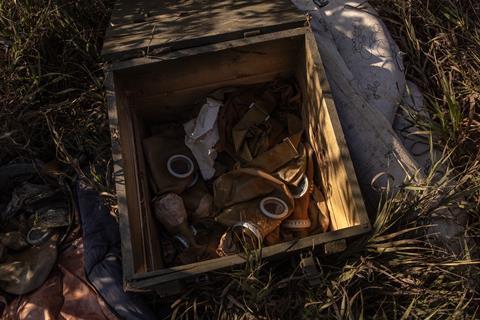Allegations of the use of tear gas and riot control agents as weapons of war by Russian forces in Ukraine are ‘insufficiently substantiated’, according to the international chemical weapons watchdog. This follows an announcement from the US Department of State, on 1 May, that it was imposing new measures on Russia for its use of chemical weapons, including chloropicrin, against Ukraine.

On 7 May, a spokesperson for the Organisation for the Prohibition of Chemical Weapons (OPCW) said that the secretariat had been monitoring the situation in Ukraine since February 2022 and that the situation remained ‘volatile and extremely concerning’ regarding the possible re-emergence of the use of toxic chemicals as weapons.
However, it said that the information provided so far by both Russia and Ukraine on accusations of chemical weapon use was not backed up by enough evidence to reach a conclusion.
The destruction of all declared chemical weapons stockpiles in the world was achieved in July 2023 under strict verification of the OPCW Secretariat. Under the Chemical Weapons Convention (CWC), any toxic chemical, used for its toxic properties with the purpose of causing harm or death during warfare, is considered a chemical weapon and states that have signed up to the CWC are obliged to declare all toxic chemical agents they hold for riot control purposes.
The US has said that it has imposed new sanctions on Russia for its full-scale war and use of chemical weapons against Ukraine, including for its use of chloropicrin, a chemical belonging to Schedule 3 of the CWC – chemicals in widespread production that have legitimate uses. The Department of State said it had ‘made a determination’ that Russia had used chloropicrin against Ukrainian forces in violation of the CWC.
Chloropicrin is a highly irritating chemical originally discovered in the 1840s. Toxic to humans and other animals, it was initially used as a tear gas agent in the first world war before being deemed too dangerous. It was supplanted in the 1920s by a chemical known as phenacyl chloride (CN), which was itself largely replaced by 2-chlorobenzalmalononitrile (CS) tear gas from the 1960s.
Russia has denied making use of chloropicrin on the battlefield and the US’s claims of the use of this specific chemical in Ukraine have been met with scepticism by experts.
Commenting on the situation on X, formerly known as Twitter, chemical weapons expert Dan Kaszeta highlighted that, due to CS gas having a similar smell to chloropicrin, it was possible that CS and/or CN gas had been misidentified in the field. ‘The situation is further complicated by the fact that the photos I have seen of alleged chloropicrin weapons is that every single photo I have seen has been of grenades that are easily identified as CS and CN grenades,’ he added.
The situation is further complicated by the fact that the photos I have seen of alleged chloropicrin weapons is that every single photo I have seen has been of grenades that are easily identified as CS and CN grenades.
— Dan “the Legal Juggernaut” Kaszeta 🇱🇹 🇺🇦 (@DanKaszeta) May 2, 2024
‘There have been claims by some that Russians have somehow scooped out the CS filling and put in chloropicrin. Given how these grenades are built and how they function, I doubt that was done.’
There have been claims by some that Russians have somehow scooped out the CS filling and put in chloropicrin. Given how these grenades are built and how they function, I doubt that was done.
— Dan “the Legal Juggernaut” Kaszeta 🇱🇹 🇺🇦 (@DanKaszeta) May 2, 2024
The OPCW said it would remain in contact with concerned states and invite those that may have further information to share it with the secretariat. ‘We will continue to monitor the situation and maintain our readiness to deploy,’ it said.